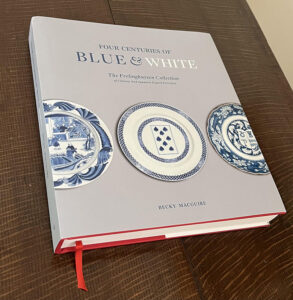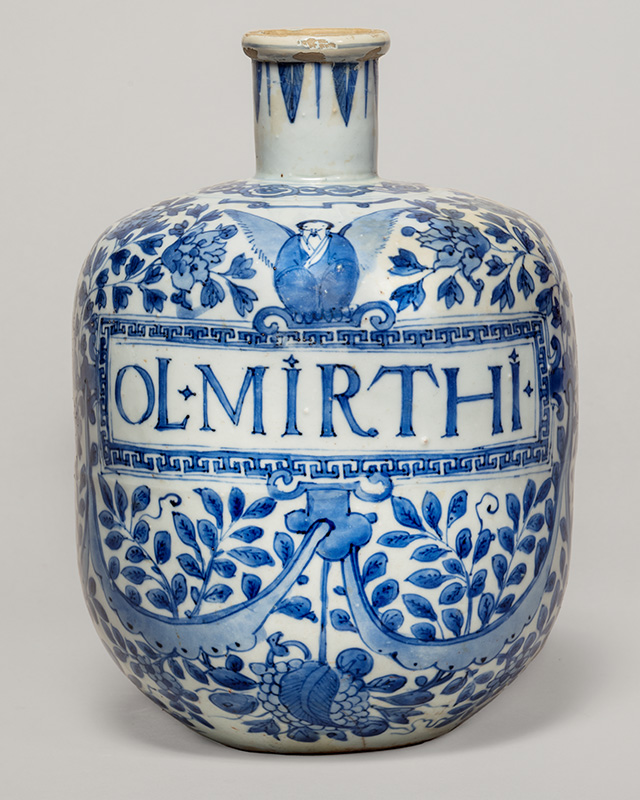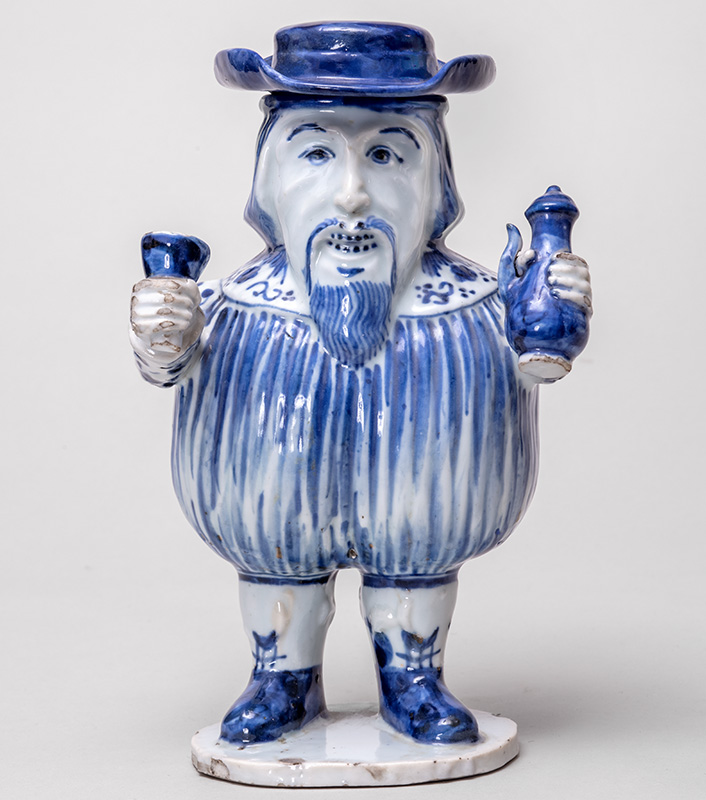Four Centuries of Blue & White: The Frelinghuysen Collection of Chinese and Japanese Export Porcelain
by Becky MacGuire
The extraordinary Frelinghuysen collection, assembled carefully over 50 years, features an exceptionally wide array of Asian blue and white export porcelain—that most ubiquitous and influential of all ceramics.
 First made in the heart of China in the 14th century, blue and white porcelain circulated throughout the world, journeying first by land and then by sea, and excited wonder and the desire to possess wherever it went. Its qualities of hardness and fineness, the brilliant contrast of its vibrant blues with its bright white ground and the pleasing proportions of its shapes had no equal. Almost 400 years went by before a material of its quality could be produced anywhere else in the world. The remarkably comprehensive Frelinghuysen collection speaks of the many ways Asian blue and white porcelain was traded, collected, lived with and loved over the centuries.
First made in the heart of China in the 14th century, blue and white porcelain circulated throughout the world, journeying first by land and then by sea, and excited wonder and the desire to possess wherever it went. Its qualities of hardness and fineness, the brilliant contrast of its vibrant blues with its bright white ground and the pleasing proportions of its shapes had no equal. Almost 400 years went by before a material of its quality could be produced anywhere else in the world. The remarkably comprehensive Frelinghuysen collection speaks of the many ways Asian blue and white porcelain was traded, collected, lived with and loved over the centuries.
After making his first purchase—an Imari bowl—in 1964, when still a young student, Rodney Frelinghuysen eventually focused on blue and white, departing from his father’s collecting of Chinese export enameled wares. Museum exhibitions and lectures and two trips to China in the late 1970s spurred on Rodney’s collecting while a 1983 visit to David Howard’s legendary London shop launched a long and fruitful relationship with the Howards. Further collecting inspiration was provided by a honeymoon trip to Thailand and a visit to Burghley House in England, where Lady Victoria Leatham had recently discovered the family’s significant 17th-century Japanese porcelain.
The Frelinghuysen collection ranges from the height of the Ming dynasty in the 16th century to the crumbling of the Qing dynasty early in the 20th century, painting a clear picture of the evolving commercial and cultural exchanges between East and West. It includes magnificent rarities made for the first Europeans to reach Asia as well as iconic classics from the age of the great trading companies and wares made for the Islamic world and Japan. The collection’s singular focus on blue and white also led to some much less-studied material, like a fascinating group made for the Thai royal court in the 1880s. A full complement of Japanese export porcelain provides an intriguing counterpoint to the Chinese, while later Chinese pieces reflect the increasing influence of European ceramics factories.
Jar with European huntresses, late 17th century, Kangxi period (1662–1722). Frelinghuysen collection.
The new book, Four Centuries of Blue & White (Paul Holberton Publishing, 2023), illustrates 550 pieces from the collection, with paintings, prints, screens, and other works of art enriching the story. Contributions by William R. Sargent, former Curator of Asian Export Art at the Peabody Essex Museum, and noted armorial porcelain authority Angela Howard precede the 13 thematic chapters, which include Faith, Identity, For the Table, To European Design and Made in Japan.
Detail of 𝘈𝘳𝘳𝘪𝘷𝘢𝘭 𝘰𝘧 𝘵𝘩𝘦 𝘚𝘰𝘶𝘵𝘩𝘦𝘳𝘯 𝘉𝘢𝘳𝘣𝘢𝘳𝘪𝘢𝘯𝘴 (𝘗𝘰𝘳𝘵𝘶𝘨𝘶𝘦𝘴𝘦 𝘛𝘳𝘢𝘥𝘦𝘳𝘴 𝘢𝘵 𝘕𝘢𝘨𝘢𝘴𝘢𝘬𝘪), early 17th century, Japanese School. Ink, color, and gold leaf on paper. Private collection.
The specialized reader will find references to the latest research as well as many pieces new to the literature. The more general reader will appreciate a comprehensive and beautifully illustrated overview of Asian export porcelain. Four Centuries of Blue & White is the first large study of this material for many decades and the first major work to consider Chinese and Japanese export wares together.
Becky MacGuire retired from Christie’s after a 30-year career as the firm’s senior specialist in Chinese export art and director of the New York Exceptional Sale. After graduation from the University of California at Berkeley with honors in art history, Becky completed the program of the Study Centre for the Fine and Decorative Arts at the Victoria and Albert Museum. She was an original appraiser on the American Antiques Roadshow and a founding partner of The Chinese Porcelain Company.
Generous offer courtesy of Becky MacGuire: Use code “BLUE” on the Paul Holberton Publishing website to receive 20% off your purchase of Four Centuries of Blue & White.
About The Decorative Arts Trust Bulletin
Formerly known as the "blog,” the Bulletin features new research and scholarship, travelogues, book reviews, and museum and gallery exhibitions. The Bulletin complements The Magazine of the Decorative Arts Trust, our biannual members publication.
Click Images to Enlarge
Did you know that clicking on the images in Bulletin posts will allow you to get a closer look? Simply click on an image, and a larger version will open in a pop-up window.















